TO DAB OR NOT TO DAB?
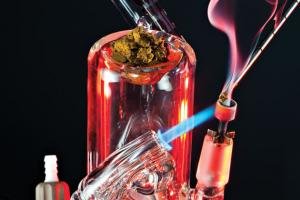
With each passing month, the popularity – and controversy – of butane hash oil (BHO) and the phenomenon surrounding it (known as “dabbing”) continues to grow in the cannabis community. Some hail it as a miracle medicine, a quantum leap forward in stoner evolution. Others criticize it, pointing to the potential dangers involved in both making and ingesting it, as well as possible negative effects on the public’s increasingly favorable attitude toward marijuana. Here at HIGH TIMES, it’s our duty to cover this issue as honestly and responsibly as we can – addressing any genuine concerns and dispelling unwarranted fears. To that end, we consulted some of the industry’s most knowledgeable experts on the subject of cannabis extracts and their effect on the human body. Here’s what they had to say.
Solvent vs Nonsolvent Extraction
The first question to be addressed is: What’s the difference between solvent extracts and traditional hash? Well, aside from appearance, the biggest difference is the process involved in making them. While traditional hash is made using sieves (wet or dry) to separate the trichomes from the plant, extract hash is made by “blasting” a chemical solvent (i.e., butane, CO2) through the plant matter, then “purging” the solvent away. But these solvents don’t just extract the trichomes – they also pull substances from other parts of the plant.
“You’re getting a lot of extra goodies that come out in those solvent extracts,” observes Bob Melamede, Ph.D. An associate professor of biology at the University of Colorado and the president/CEO of Cannabis Science Inc., Dr. Melamede is one of the world’s few experts on the human endocannabinoid system. “Aside from the oils, there are all sorts of compounds that come out that probably have beneficial value,” he says. “We’ve got indications that there are differences in the effects, pain relief properties and potentially other important phenomena. We don’t really know at this point … all we know is that this plant is quite the magical chemistry set.”
It’s also widely believed that BHO boasts a higher concentration of THC and is therefore much stronger than traditional hashish. But is this really true? As the cannabis critic for Denver’s Westword alt-newspaper, William Breathes is paid to sample and review a wide array of cannabis products – and according to his experience, it is stronger. “When you look at the percentage of cannabinoids per weight, it seems you’re pulling out more THC with butane than with ice water,” he says.
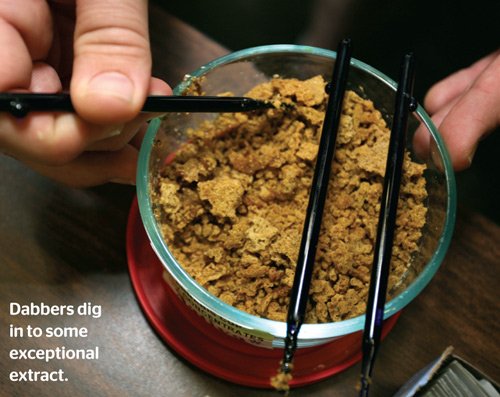
But there are those who disagree – such as Selecta Nikka T, owner and operator of Colorado’s Essential Extracts. “It’s such a new phenomenon that we really don’t have enough data to show that BHO is getting higher test results than water extraction of the same strain, or if there are any dangers to it,” he asserts. “I prefer the solventless method, because we can retain terpenes a lot better than most solvents, and I don’t have to worry about anything being left over in my product.”
Another of Denver’s extraction experts is Daniel “Big D” de Sailles, a partner at Top Shelf Extracts, who isn’t quite as skeptical. “I’m a 100 percent proponent of BHO, because I’ve seen it make people’s pain just evaporate,” he states. “As medicine, it helps with both harm reduction – it practically cures withdrawal symptoms in people who are alcoholics or addicted to speed or pharmaceuticals – and pain management. It works every single time, and it’s easier to regulate your dosage. You take a fraction of a percent of a gram, and you’re fully medicated and exactly where you want to be.”
So which is better, butane or solventless? Until more analysis is done comparing the chemical composition of the plant material to the solvent extracts, we won’t know the real differences. But according to Amarimed of Colorado’s Alan Shackelford, MD, it’s not really a matter of “better” or “worse” – just what suits a patient’s individual needs and preferences.
“There isn’t necessarily one method that’s superior to another,” he explains. “Concentrates can be provided in a variety of ways … different options for different conditions that vary from person to person, as it should be.”
Butane and the Body
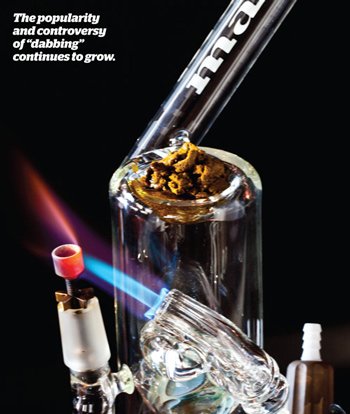
One of the biggest concerns regarding BHO is that inhaling butane might be unhealthy.
de Sailles isn’t convinced. “Butane is used in so many things we buy,” he points out, “like hairspray, cooking spray, e-cigarettes, flavor extracts … so it’s already around.” Even so, the fact that butane is present in a number of consumer products doesn’t necessarily mean that it’s safe.
Fortunately, both Dr. Melamede and Dr. Shackelford seem to agree that it is. “I looked through the National Library of Medicine database on this, and there isn’t any evidence that inhaling residual hydrocarbons like butane are dangerous – at least in small amounts,” says Dr. Melamede. “It’s an irritant, but that’s about it.”
But if we eliminate butane as a risk, are there other dangers involved in using BHO? “There’s very good evidence that smoking marijuana doesn’t harm the lungs, and I’m quite sure that smoking concentrates doesn’t either,” says Dr. Shackelford. “The only real negative would be overdosing, which might make you uncomfortable for a while, maybe a little anxious or paranoid … but as far as a long-lasting physiological danger? I don’t think so.”
“I’ve seen people consistently do 25 half-gram hits and not have any adverse side effects,” de Sailles argues. “BHO has been around since the year 2000, so people have been dabbing for a decade now and there haven’t been any real problems reported yet.”
But, in fact, we know of at least one serious problem that has been reported: Last year, a young woman named Jessi was “blowing nails” of BHO when her throat suddenly swelled up, making it difficult to breathe. She was rushed to the hospital, where she was diagnosed with chemical epiglottitis, a condition in which the epiglott – the flap of skin that separates the esophagus from your trachea – becomes inflamed by an irritant (i.e. infection, heat, chemicals) and blocks off the windpipe. Luckily, Jessi was treated in time; if she hadn’t been, the condition could have been fatal. So if this is a possible consequence of dabbing – even one experienced by only a tiny percentage of users – people need to be aware of it. But what actually caused this reaction?
“I very much doubt it was the butane or concentrate at all, but some other factor,” Dr. Shackelford says. “The volatile evaporative temperature of butane is extremely low – so if you’re heating it up, that butane is pretty much gone; any residual wouldn’t be a problem. There are a lot of different things it could’ve been … maybe it was just the temperature. You can actually get epiglottitis from hot coffee if you swallow it incorrectly.”
“I’d say the least likely of all was that it had anything to do with the butane,” Dr. Melamede concurs. “It could’ve been contaminants in the product … she might’ve had an allergy to something else that was concentrated.”
Blasting Flowers
It’s widely agreed that the most dangerous aspect of BHO is making it – or, rather, not making it properly. There have been numerous reports of people causing large explosions while attempting butane extractions without taking the necessary precautions.
“These dangers are real,” says Selecta Nikka T. “People are blowing up their homes. So if we’re going to continue doing this – which I’m sure we are – we need to take into account all the safety precautions needed for this process.”
Let’s be clear about this: HIGH TIMES strongly discourages anyone who has not been professionally trained from making BHO on their own. However, we realize that some people out there are going to do it – and if so, we want them to recognize that they need to do it responsibly.
“There are two ways to go about using butane to extract,” explains de Sailles. “There’s an open system, where you take a tube, you fill it with trim, you stick in a can of butane in one side and then filter it through coffee filters into a pan, where you purge it. That’s the open system, and that’s what people are doing inside and blowing themselves up. The other way – a closed system – is when you get a machine that actually recycles the butane. That’s a lot safer, but you should still be in a well-ventilated area.”
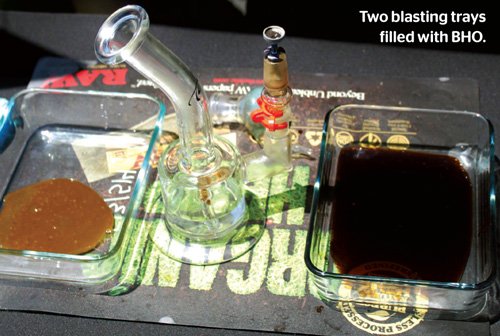
Being outdoors is key, because the butane vapor that evaporates is highly flammable and can be ignited even by something as seemingly harmless as static electricity. Making BHO indoors is like asking to be blown up. (Think about it – they don’t call it “blasting” for nothing.)
“It happens,” Breathes admits. “I’m not going to argue that it doesn’t blow up and that people aren’t stupid; there are plenty of videos on the Internet to prove that. If you want to do it right, the info is out there … all we can do is advocate responsibility.”
“You can’t legislate intelligence or responsibility,” Dr. Shackelford agrees. “That’s the problem: We have to protect ourselves from ourselves – but we can’t.” Then he raises another caveat: the composition of the tube that holds the weed.
“It’s important to use stainless steel, not PVC piping,” he stresses. “Plastic is always a potential problem. Butane extracts all kinds of stuff, and you don’t want polyvinyl chloride in your concentrate.” Even when doing water or bubblehash extractions, he adds, it’s important to use food-grade plastics: “If you’re just using some orange bucket you bought at Home Depot, you’re likely to extract unwanted chemicals such as hardeners from the plastic. If it’s an industrial product and not food-grade, just assume that there’s going to be dangerous stuff in it.”
Gaseous Anomalies
The most common impurities usually arise from “dirty” butane. The fuel sold for use in lighters is only about 80 percent butane and contains chemicals that smell (such as thiols – also known as mercaptans – or sulfur dioxide), which are added so that leaks can be detected. Since these chemicals will taint the taste and purity of your extract and can be harmful if ingested, this kind of butane should never be used. Only butane that’s quadruple-refined or better is suitable for use – and even then, you can’t always be sure what you’re getting, since there’s no across-the-board standards for purity.
“There are all these companies coming out of Korea now and other places that are saying [their butane is] ‘five times refined,’ ‘three times refined’ – but who really knows what type of refinery process they’re using?” warns Nikka T. “Their ‘five times refined’ may not be as clean as, say, Colibri’s ‘three times refined.’”
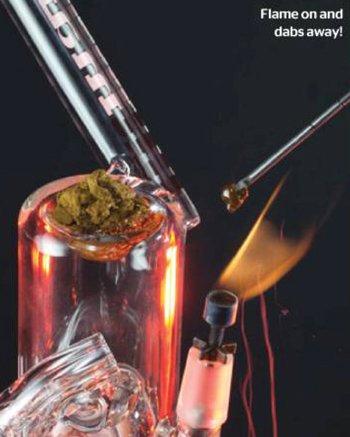
So how can BHO makers know which products are best to use? According to de Sailles, that testing has already been done. “The knowledge base that’s online right now is extensive,” he says. “People have tested every single one, and so far Vector and Colibri are the two choice brands for making BHO. I personally use Vector 5x, but I’m in the process of switching over to pure n-butane.”
Pure n-butane (C4H10) is medical or laboratory-grade butane, which is available at 99.9 percent purity. It evaporates completely at a low temperature (-0.5oC), so the chances of residue are slim, and such residue would be pretty much tasteless and harmless. But there’s a downside: Pure n-butane is sold only in large quantities (five to 485-lb. cylinders) by gas-supply companies and is fairly expensive. Considering that you only need around eight ounces of butane for each ounce of cannabis, this isn’t an option most would-be blasters would opt for.
The Purge
After the extraction, your concentrate must be purged of whatever solvent remains in it. In an open system, this can be tricky – and dangerous.
“I make sure to blast into a pan that’s already floating in fairly hot water, where you put your finger in and have to pull it out after a second,” says de Sailles. “You’ll see the butane bubble away and evaporate, and what’s left over are big, thick bubbles, which you then have to pop. It’ll usually take about two or three water changes until there’s not enough butane left in it to do anything and you can actually take it inside.”
“How fast you get that butane out of your concentrate matters a lot,” he adds. “One of the problems with closed systems is that it takes up to an hour to recover the butane – so that whole time, your extract is soaking in solvent. If you leave extracts soaking too long, it can cause the cell membranes to rupture. So I try to get it out as quick as possible.”
In a closed system, the extractor machine will “vacuum-purge” the solvent from the concentrate. In theory, this method is safer and more reliable, but in reality, that’s not always so.
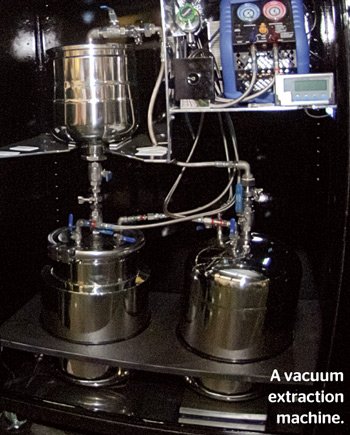
“A lot of people playing around with vacuum-purging don’t know what they’re getting into,” says Selecta Nikka T. “People are getting vacuums and pumps and chambers that aren’t completely sealing, or they’re not getting strong enough of a vacuum. I’ve even seen some material still crackle after just having water stuck in it from the vacuum chamber.”
“If it makes a crackling sound when you heat it, you know for sure it’s dirty,” de Sailles cautions. “The heat is burning the solvent, so it makes a sizzling sound like water in a hot skillet. If it’s sizzling, then there’s a problem with the technique of the person who’s making it. If they couldn’t keep the water out of it, I wouldn’t trust their extraction skills.”
Purity Of Product
Nearly everyone agrees that the only serious health risk posed by smoking BHO is the possibility of ingesting harmful contaminants that may have been infused into the concentrate during the extraction process.
“The biggest concern is the quality of the marijuana – who’s been growing it and what they used,” says Dr. Melamede. “If you have contaminants (i.e., pesticides, herbicides, fungi) on your plant, that’s going to come off into the extract. Then, when you evaporate the solvent, you’ll actually be concentrating those things – and that’s the real danger. Pesticides are typically extremely nasty in how they can affect your nervous and immune systems, so you definitely don’t want to be consuming that.”
As if incompetent blasters weren’t enough, one must also be wary of criminals out to make a quick buck selling bogus product. “You have a whole spectrum of unscrupulous people out there who are going to do whatever to try to make money,” says Dr. Melamede. “I personally wouldn’t use any cannabis product if I didn’t know who produced it and/or hadn’t had it properly analyzed.”
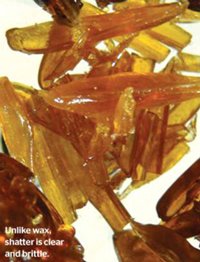
One perfect example: a video that Breathes posted on his blog in which he drops a chunk of “shatter” (brittle BHO) onto a hot nail, only to have it flame up high enough to scorch his face if he’d actually tried to inhale it. Later that week, Breathes had the sample tested and was shocked to learn that it contained only 10 percent cannabinoids (compared with 50 to 75 percent in most concentrates). What the other 90 percent was – and who was responsible for making this dangerous pseudo-hash – has yet to be determined.
Metal Fume Fever
Another concern that’s recently come up is whether or not the metal nails used for dabbing might – under heat and over time – oxidize or flake, forcing the user to inhale toxic dust or fumes. Such a situation might cause a condition called “metal fume fever,” whose symptoms include chills, nausea, headaches, fever and muscle pain. But according to our experts, if the nail is pure titanium or quartz, the chances of that happening are slim to none.
“If [the nail] was made with lower-grade metal rather than Grade 2, commercially pure titanium, it could flake off,” de Sailles warns. “But as far as titanium oxidizing, it’s supposed to naturally change color a bit over time. As far as I know, there’s no adverse side effects to that.”
“Whether there are any adverse effects, I don’t think anybody really knows,” Dr. Shackelford says a bit more circumspectly. “But titanium is in a lot of different things – it’s in yogurt; titanium oxide is a coloring agent in sunscreen; and most frequently it’s used in implantable joint-replacement devices – so there’s probably not much of a danger.”
Blowtorch Blowback
Assuming we’re able to dismiss the health risks, there is still the public-relations issue: namely, that because the techniques used to make and consume BHO bear an eerie resemblance to those used for harder drugs like meth and crack – and because its potency is so much higher than regular weed – dabbing is ripe for exploitation by the prohibition propaganda machine. At a time when the acceptance of marijuana among the general public is higher than ever, there’s a fear that seeing teenagers wielding blowtorches or blowing themselves up on the evening news might incite a new anti-pot paranoia that could set the legalization movement back decades.
Breathes discounts such concerns as mere growing pains in cannabis’ perceptual evolution. “People have been smoking hot knives in HIGH TIMES for 40 years, and it’s really the same premise,” he says. “It’s just a progression, a matter of technology. Maybe people got scared when glass pipes became big or headshops became big. There’s always going to be something to scare the people who want to be scared. Those people are probably turned off by cannabis in the first place and probably aren’t too open-minded.”
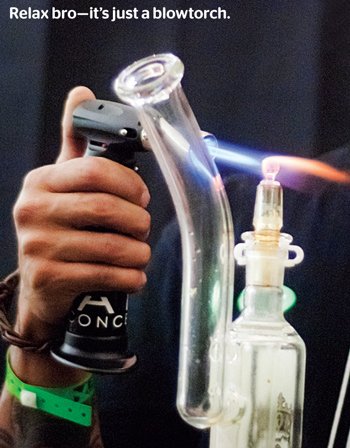
“It’s just about being honest and transparent and showing it in a positive way,” Breathes adds. “It’s the same as weed; it’s just stronger. There are people using it recreationally, and that’s wonderful, but we’re looking at it as a new way of medicating. For somebody who’s really sick – battling nausea, for example – maybe choking down a whole joint isn’t for them. Vaping one little hit of oil or solventless wax is so potent all at once, it’s great medicine. We need to talk about that – that’s how we bring it to the public and stop people from being scared of it.”
For his part, de Sailles offers the following prediction with a chuckle: “More and more people are using vape pens and e-cigs to smoke their oils – so I imagine that will be more socially acceptable than a blowtorch.”
Or perhaps we can just say, as one promotional sticker so insouciantly puts it, “Relax, bro – it’s just a blowtorch.”
I HOPE YOU ENJOYED THAT GREAT ARTICLE I FOUND ON HIGHTIMES.COM!!!
HERE IS THE LINK TO THE SOURCE:
source: http://hightimes.com/culture/to-dab-or-not-to-dab/